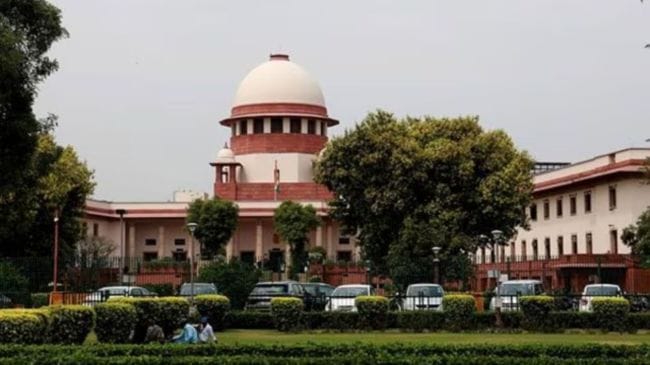Opinion The multiple flaws in the Presidential Reference case
Beyond questions of maintainability lies a deeper constitutional concern: The sovereignty of the people
 Subramanian said there are various verdicts of the Supreme Court, where it has been held that the governor acts independent of aid and advice of the council of ministers and exercises its discretion with regard to section 197 of CrPC.
Subramanian said there are various verdicts of the Supreme Court, where it has been held that the governor acts independent of aid and advice of the council of ministers and exercises its discretion with regard to section 197 of CrPC. The Supreme Court, on April 8, in State of Tamil Nadu vs Governor of Tamil Nadu (‘Tamil Nadu Case’), put down clear timelines for gubernatorial action under Article 200, ruled out the possibility of indefinite withholding of assent, and reaffirmed that once a Bill is repassed by the legislature, the Governor is bound to give assent. The Tamil Nadu case was more than a matter of procedural clarity; it was an affirmation of democratic principle that the will of the people, expressed through their elected representatives, cannot be indefinitely delayed by any Governor. On May 13, the President invoked Article 143 of the Constitution and sought the Supreme Court’s opinion on 14 questions concerning gubernatorial and presidential powers. These questions go to the very issues just settled in the Tamil Nadu case.
The Reference begins from a startling premise: That Article 200 does not prescribe any timeline for Governors. This claim collapses on closer reading. The proviso to Article 200 explicitly directs the Governor to act as soon as possible. The Supreme Court itself has already clarified the meaning of those words. In cases like State of Punjab vs Governor of Punjab (2023), the Court made it clear that Governors cannot delay assent indefinitely. To pretend otherwise is to ignore binding precedent. The Reference, in its very foundation, rests on a misstatement of law. It appears designed not to clarify, but to reopen, the Tamil Nadu case. By failing to even acknowledge that judgment, the Reference suppresses an authoritative precedent and invites the Court to re-decide what it has already decided.
The advisory jurisdiction of the Supreme Court under Article 143 is not a substitute for appeal or review. In Re: Cauvery Water Disputes Tribunal, (1993), the Court made it clear that a Presidential Reference cannot be used to sit in appeal over an earlier decision. In Natural Resources Allocation, In Re (2012), the Court declined to answer questions that had already been settled in prior judgments. A Presidential Reference under Article 143 cannot serve as a substitute for a proper legal remedy. If the Court has already settled the law in the Tamil Nadu case, there is simply no need for a Presidential Reference. Questions on withholding of assent, reservation for the President, or the consequences of gubernatorial silence have all been answered.
Beyond these questions of maintainability lies a deeper constitutional concern: The sovereignty of the people. The legislature is the institutional embodiment of the people’s mandate. Its enactments carry democratic legitimacy. Governors, by contrast, are nominated constitutional heads. To allow them to sit indefinitely on Bills is to invert democratic accountability, making the unelected superior to the elected. It would render legislatures dysfunctional and paralyse governance, not through democratic debate or judicial scrutiny, but through inaction. The Tamil Nadu case restored this balance by ensuring that gubernatorial discretion is bounded by time. By seeking to unsettle that ruling, the Presidential Reference risks undermining the very premise of representative government. It threatens to transfer the final say from the Assembly, which speaks for the people, to the Governor, who speaks for none, and also of the Supreme Court which has settled the law on these grounds.
The controversy also has a federal dimension. If Governors, acting at the behest of the Union, can block or delay state legislation indefinitely, the Centre acquires a de facto veto over matters in the State List. That reduces State autonomy and distorts the federal compact on which the Constitution rests. This assumption that Governors act as agents of the Union is constitutionally untenable. Governors are the constitutional heads of state governments, not emissaries of the Centre. To allow them an unlimited veto would hollow out the federal principle and tilt the balance dangerously toward centralisation.
The Presidential Reference represents a serious misuse of the power under Article 143. It attempts to draw the Court into setting aside its own judgment. Worse still, even if answered, an advisory opinion is not binding. As the Court itself observed in Ahmedabad St Xavier’s College vs State of Gujarat (1974), such opinions carry persuasive value but do not override adjudicatory rulings. The Reference is therefore doubly flawed: It cannot overturn the Tamil Nadu case, and it serves no binding purpose.
Answering it would encourage the executive to bypass judicial pronouncements and interpretations. Whenever a government is dissatisfied with an interpretation, it could simply advise the President to make a Reference. That would erode the authority of the Court’s adjudicatory jurisdiction, undermine judicial independence, and weaken the separation of powers. The Supreme Court has, in the past, declined to answer Presidential References when the questions were either settled or inappropriate. The 2G spectrum Reference of 2012 is a clear example, where the Court refused to advise on issues that had already been addressed in its earlier 2G judgment.
The correct course now is to follow that precedent. Such a step would reaffirm two principles fundamental to our constitutional system: First, that advisory jurisdiction cannot be converted into an appellate forum; and second, that the people’s mandate, once expressed through their legislature, cannot be indefinitely suspended on a Governor’s desk.
The writer is a lawyer and legal researcher based in Delhi





